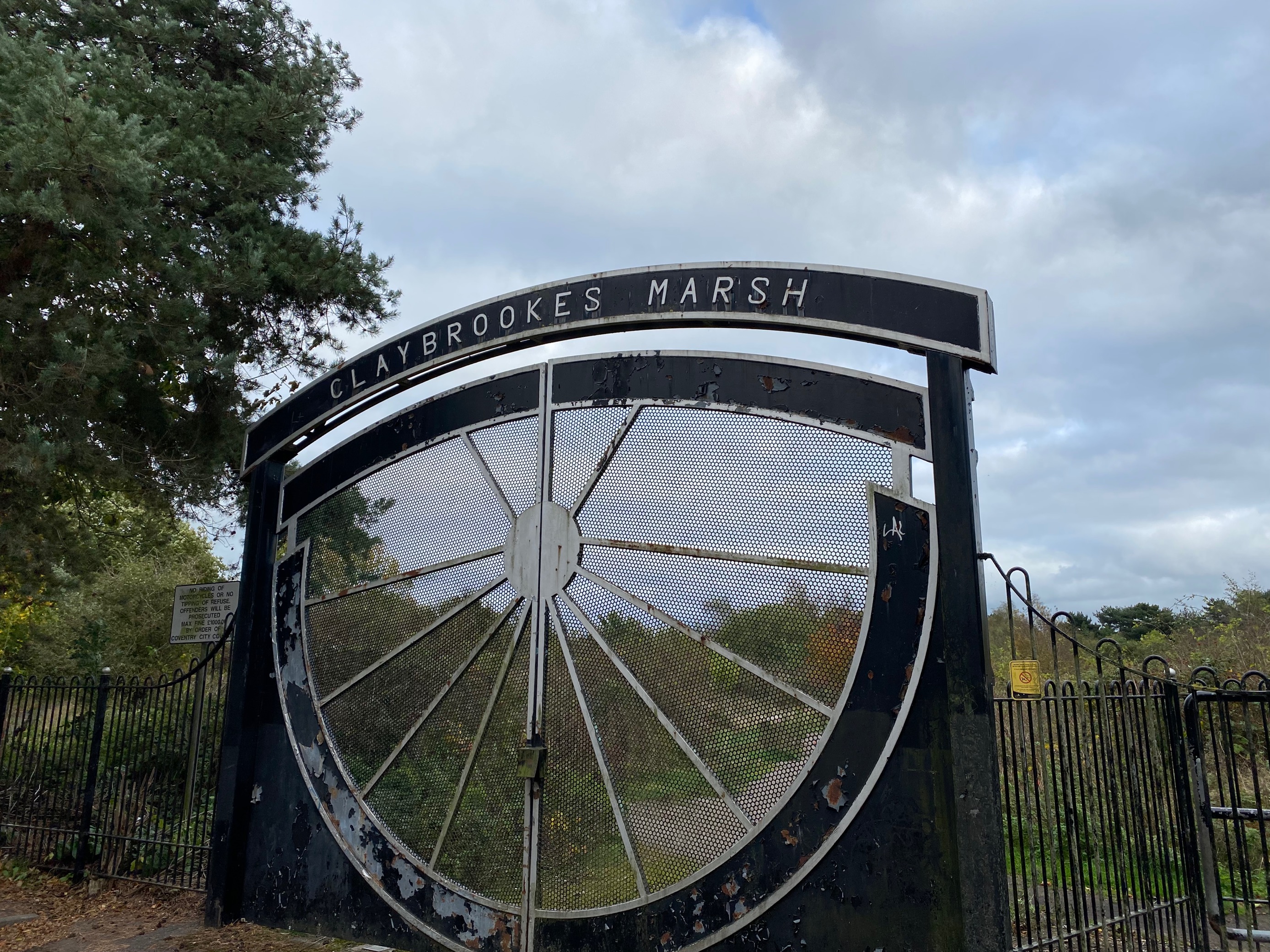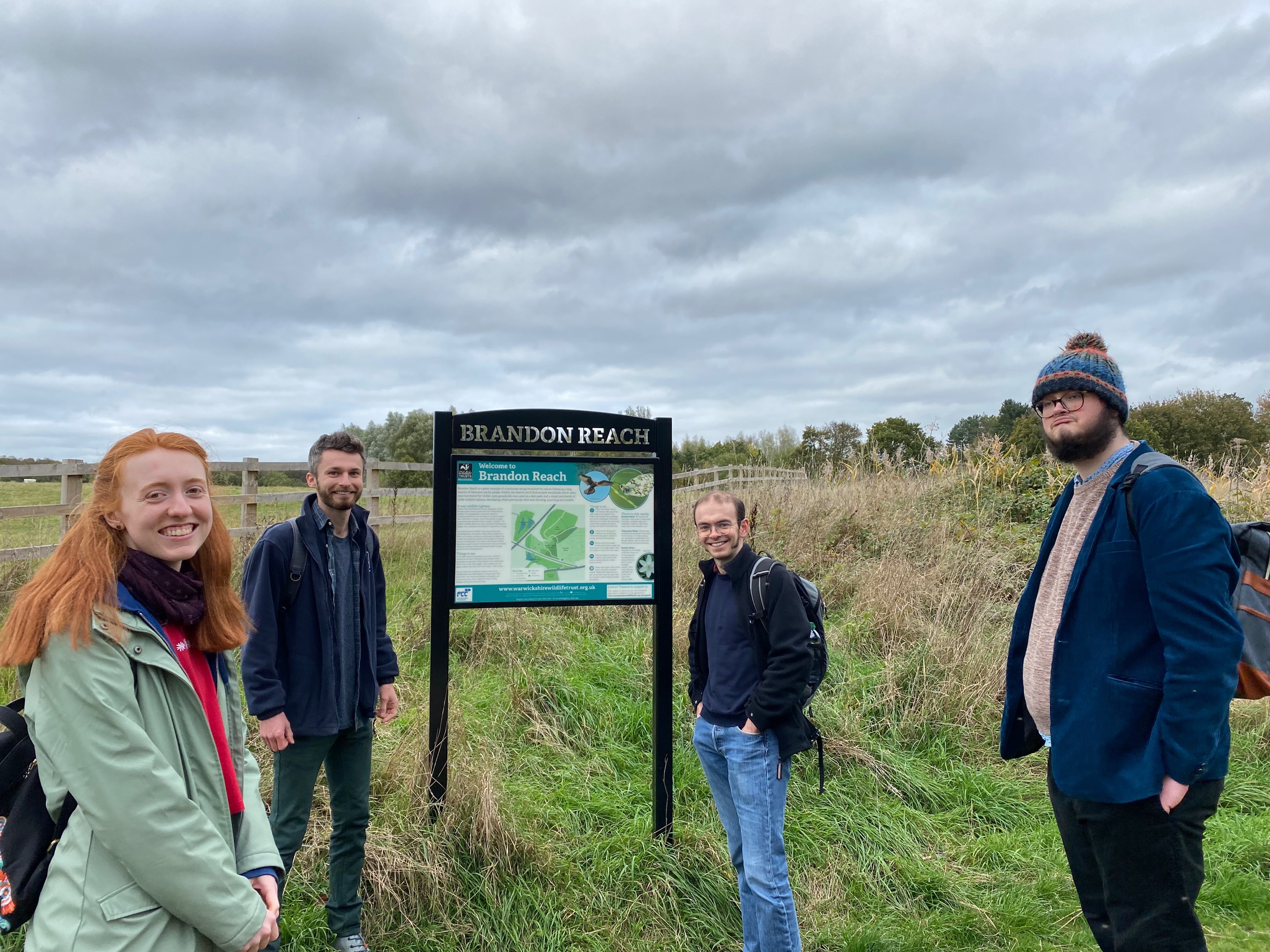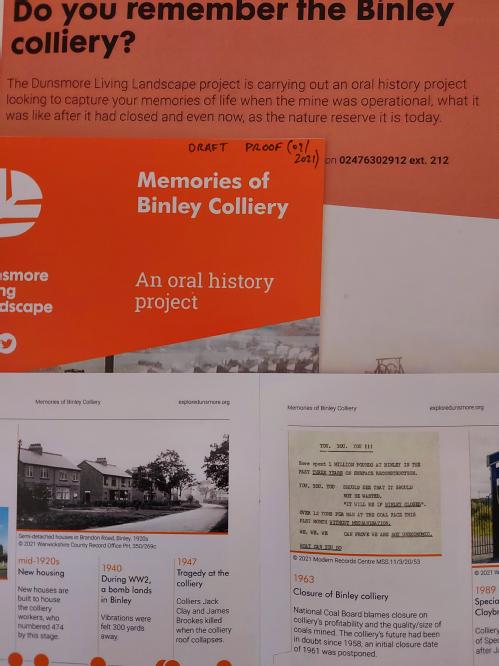Binley Project Booklet and Seminar
Project Booklet
The central output of the Binley project is a 16-page full-colour booklet showcasing some of the key themes and main findings from the project interviews.
The booklet was made possible through the award of Public Engagement funding by the University of Warwick, the tireless efforts of the project volunteers, and the creative flair of our designer Steve.
Printed copies are available from Warwickshire Wildlife Trust.
Project Seminar
On 1 December 2021, we held a seminar about the project at the University of Warwick to launch the booklet and reflect on the project's process.
Student Feedback
As part of the project, our undergraduate volunteers prepared a blog post for the university - which seems never to have been published. Part of the blog included their comments on how they found the project:
Fu Ge
I first heard of the Binley Colliery Research Project via my History department email and was drawn to the idea that this was both an opportunity to engage with a history research project and ability to learn more about the local area and its history considering I am not from this area of the UK. I have only previous heard about the processes needed when conducting an oral history research project so it was fascinating seeing first-hand how the project is conducted, its practical considerations and different methods of gathering information. Listening to the interviews and the interviewees talking about their past experiences in the village made it more tangible and motivated me to want to help record their experiences and help their memories. Prior to COVID, I did not face many challenges as our head of the research project, Pierre Botcherby and Daniel Loveard, were very accommodating and our work schedule was flexible. However, COVID and the lockdown certainly posed the greatest challenge for us all as it not only disrupted the plans and scheduled events, but also made working together more difficult. At the initial stage of the lockdown, before we had more meetings together, I felt I was working alone rather than as part of a team as it was hard to know how the work each of us put into the project would come together and drive it forward. Now though, because we are all communicating online via Microsoft Teams rather than individually reporting work back to Pierre and Daniel, and are updating each other about our progress and next stage of work through meetings, I feel more as part of a team and more able to deliver on the tasks to help the project progress.
Dan Smith
Covid-19, and the subsequent lockdown, has fundamentally changed the way the Binley Colliery Project has functioned. The move to a digital volunteering experience has been, in my opinion, beneficial in fostering a team spirit. However, why did I get involved with the project in the first place and what have I gained from this experience so far?
There are many reasons why I decided to volunteer for this unique project. One reason is that my family history hails back to Durham and the mining communities found there. I got involved because I wanted to build up a greater picture of what life was like in mining communities in general, and perhaps how my own ancestors could have lived and worked in such communities.
I also wanted to gain some experience of working with archive material because I am thinking of pursuing a career in archives and record management. So far, I believe I have gained valuable experience in transcribing interviews and formulating summaries for these transcripts. In the future, I look forward to working with material sourced from residents of Binley.
Finally, I wanted to understand the area in which I study, and next year live in. I don't think the average student investigates the area or city that they live in for their studies. I find this a great shame. To me, knowing at least part of Coventry's history was an important part of why I volunteered. Since getting involved with the project, I do feel as though I have gained a greater understanding of Coventry's history.
Kiera Evans
This project appealed to me because I hadn’t engaged with oral history before. I thought it would be a really good way to get to know the area local to the university, as well as take a different approach to local history - I’ve previously volunteered in my local museum, but my focus was more on conservation of exhibits than the local people. I’ve enjoyed gaining an insight into different people’s experiences of working and living in Binley over the course of the project.
Although the remote work that we have been doing during the pandemic was unexpected, I’ve found it relatively easy to adjust because we have regular meetings about the project’s progress so everyone is kept up to date and the feeling of being a part of a team hasn’t been lost.
Amy Holliday
Having previously gained work experience in the London Metropolitan Archives, I was very keen to get involved with this project when it was advertised to us through the Warwick History Department.
I’ve always found it fascinating how local history mirrors national and global history in many ways and can give us the specific detail that is often overlooked when studying broader time periods and phenomena. The chance to get involved in drawing out this detail was something that I was therefore keen to help with.
Not only has it been great to help in this way but on a personal level it has also been interesting to learn about the stories of the individuals that were being interviewed as I transcribed.
Although the onset of Covid-19 meant some in-person site trips and archive visits could not go ahead, the transition to online participation has been relatively straight-forward. Indeed, we have been fortunate, with most of the recorded interviews and transcripts having been uploaded online as the project has gone on.
Lockdown also meant that we had to think more about how we could best make use of online spaces. This led to the use of Microsoft Teams where we have uploaded documents for all of us to see meaning it has been easier for us to collaborate and to work when best suited us.

Image description: the entrance gates to the nature reserve on the former colliery site. The gates are tall and made of black metal, depicting a wheel-shape pattern and topped with the nature reserve's name, 'Claybrookes Marsh', named after two miners who died when a section of the colliery collapsed on them.

Image description: project volunteers on a site visit to the former colliery, October 2021, pictured here at the start of the Brandon Reach nature reserve run by Warwickshire Wildlife Trust. From left to right: Kiera (3rd year UG, History), Daniel (WWT), Pierre (OHN administrative assistant), and Dan (3rd year UG, History).
Photo credits: Fu Ge Yang (3rd year UG, History)
Return to Memories of Binley Colliery page.

Image description: collage-style photograph showing some pages of the booklet, including the timeline page and the front cover.
